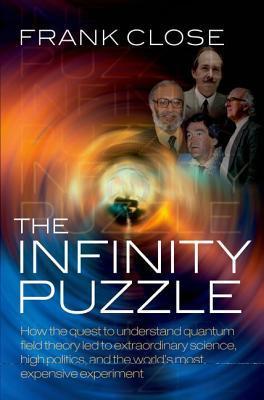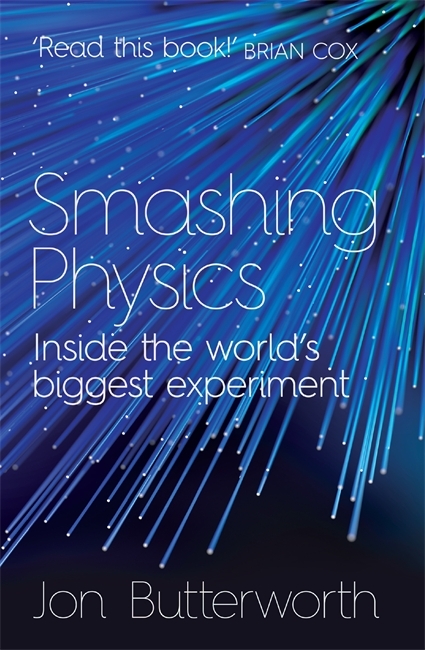
The Infinity Puzzle: How the Quest to Understand Quantum Field Theory Led to Extraordinary Science, High Politics, and the World's Most Expensive Experiment
Book Description
Unlock the mysteries of the universe with "The Infinity Puzzle," a riveting exploration of how the enigmatic realm of quantum field theory collided with science, politics, and ambition. Frank Close masterfully chronicles the high-stakes journey that wrestled with the fundamental forces of nature, leading to breathtaking discoveries and unprecedented challenges. As the world’s most expensive scientific experiment looms on the horizon, alliances shift, rivalries ignite, and the pursuit of truth pushes humanity to its limits. Can science manage to unravel the fabric of reality, or will ambition threaten to derail the quest for understanding?
Quick Book Summary
"The Infinity Puzzle" by Frank Close offers a captivating journey through the development of quantum field theory, the scientific ideology underpinning our modern understanding of the universe’s fundamental forces. Close reveals not only the monumental breakthroughs—from the conception of the Higgs boson to the standard model—but also the intense personal rivalries, political maneuverings, and institutional challenges that defined the quest. The narrative humanizes renowned physicists like Peter Higgs, Richard Feynman, and others, illustrating how ambition and collaboration shaped discoveries. Close also explores the societal implications of science at this scale, culminating in the construction of the Large Hadron Collider, the world’s most expensive experiment. This story demonstrates that the path to unraveling nature's deepest secrets is both scientific odyssey and very human drama.
Summary of Key Ideas
Table of Contents
The Puzzles and Paradoxes of Quantum Field Theory
Quantum field theory stands at the heart of modern physics, seeking to explain how the universe operates at its most fundamental level. Born amidst the intellectual turbulence of the twentieth century, QFT resolved persistent paradoxes that classical physics couldn’t address, such as the infinities that plagued quantum calculations. Early physicists, driven by conflicting ideologies and incomplete data, wrestled with mathematical inconsistencies, ultimately developing tools like renormalization to tame these infinities. The story traces how theoretical puzzles catalyzed breakthroughs vital for our understanding of matter and energy.
Rivalries, Collaboration, and the Human Side of Science
Progress in quantum field theory was as much a contest of personalities as it was of ideas. The book introduces a panorama of brilliant, often eccentric physicists, including Richard Feynman, Murray Gell-Mann, and Peter Higgs. Their intense rivalries and collaborations propelled the field forward but also introduced drama and tension into scientific progress. Personal ambition and academic politics sometimes obstructed communication and recognition, revealing the complex social fabric in which scientific advancement is woven. Ultimately, moments of cooperation were as crucial as competition in moving the science ahead.
The Evolution of the Standard Model
As theoretical physics advanced, the focus shifted to unifying the forces of nature—electromagnetic, weak, and strong interactions—culminating in the formulation of the Standard Model. Central to this was the search for a mechanism that gives particles mass, leading to the hypothesis of the Higgs field and boson. The Standard Model’s development required painstaking experimental and mathematical work, and the narrative highlights both incremental and dramatic leaps toward a comprehensive theory of fundamental particles.
Political and Financial Challenges in Big Science
The scale and ambition of particle physics experiments grew, demanding unprecedented financial investment and international cooperation. Political maneuvering played a significant role, influencing which theories were prioritized, what experiments received funding, and how recognition was distributed among scientists. Close details how the intersection of science and politics shaped the field’s trajectory, with examples ranging from major funding battles to the global debates surrounding the construction of large accelerators.
The Large Hadron Collider and the Search for the Higgs Boson
The story culminates with the creation and operation of the Large Hadron Collider (LHC), the most expensive experiment in scientific history. As the embodiment of decades of theoretical and experimental work, the LHC represents both the pinnacle of human ingenuity and the complexity of international scientific collaboration. The book concludes with reflections on the discovery of the Higgs boson, showing how this final piece of the Standard Model’s puzzle crowned a century-long effort to probe the universe's deepest mysteries, while raising new questions for future generations.
Download This Summary
Get a free PDF of this summary instantly — no email required.





